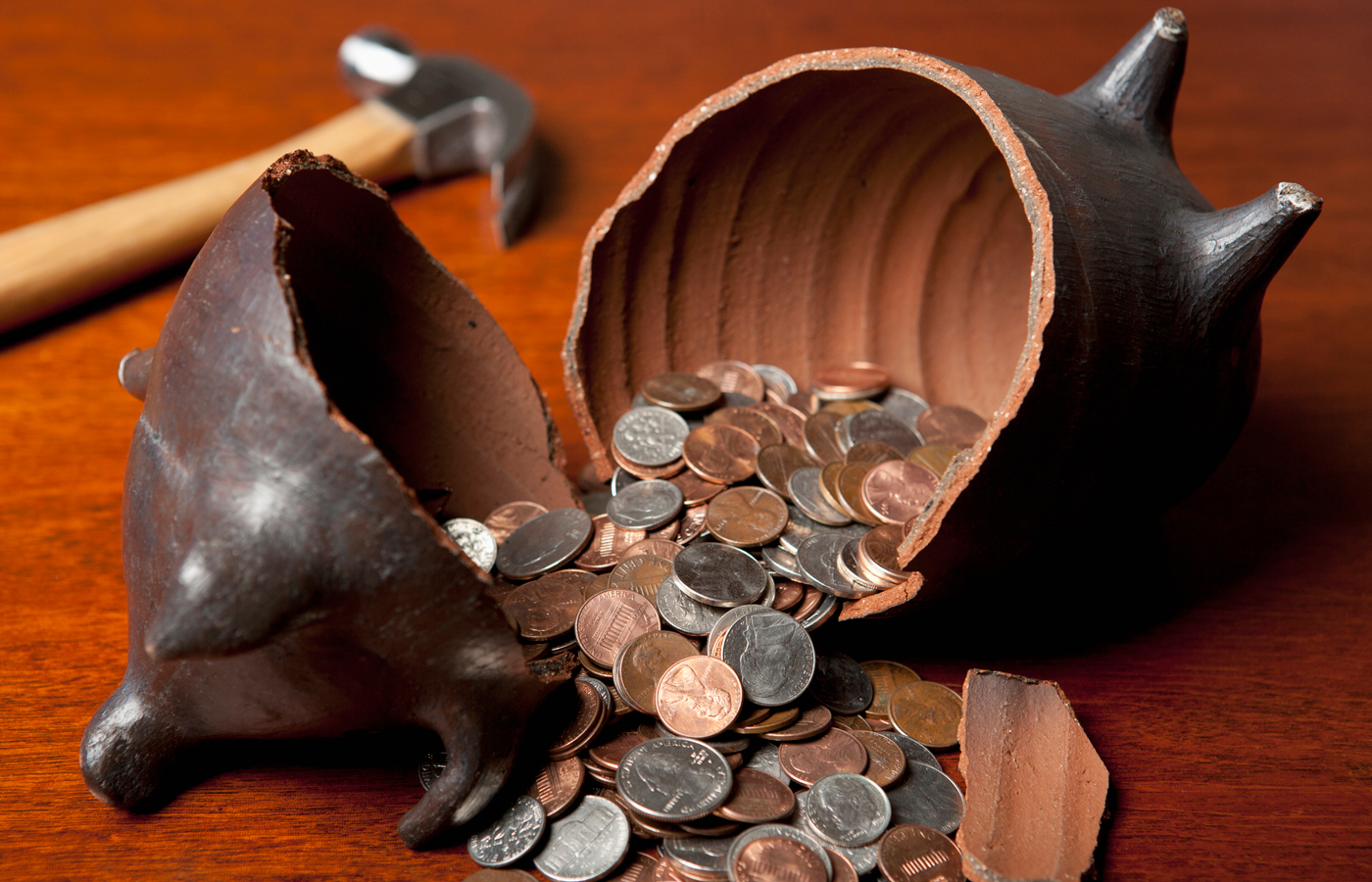Guide to Saving for an Emergency Fund
Saving for an emergency fund takes time, but it’s far better to have it and not need it, than to need it and not have it.
 Getty
Getty
Phones get broken, accidents happen on the road, unforeseen health complications arise, and homes are susceptible to a wide variety of costly malfunctions. In most cases, it’s not a matter of if disaster will strike, it’s a matter of when. Without the proper preparation, these sudden expenses could send you or your loved ones into financial ruin. Having a dedicated emergency fund is a great way to mitigate some of the burdens that come with unexpected financial emergencies.
In a world where living paycheck-to-paycheck is the norm for many, setting aside any amount of money, no matter how small, feels daunting. Disciplining yourself to save incrementally takes time, but it is possible! Knowing how to calculate an emergency fund is essential for setting financial goals. This guide will help you to determine how much you should save and how to start saving.
 Getty
Getty
Before you get started, consider these three questions.
1. How much are your monthly expenses?
Rent or mortgage, vehicle payments, gas, groceries, applicable utilities, insurance and any other essential cost of living expenses should all be factored into this number. If you want to have enough money set aside to cover these bills for multiple months, take the total monthly expense and multiply it by the number of months you would like to account for in your emergency fund. This will give you an overall goal to strive for.
2. How volatile is your income?
While many people receive consistent paychecks that do not fluctuate, others are not as fortunate. Not knowing how much money will be in your paycheck or when your next paycheck will come certainly makes saving difficult. If your take-home pay is inconsistent, or you are employed in a seasonal or unstable industry, it might be prudent to save more to account for these instabilities.
3. How much of your paycheck should you save?
The answer to this question is different from person to person. Needs and general expenses will vary. There is no definitive statistic that states, “This is how much you should save a month.” The ultimate goal is to reach a point where three to six months of expenses are covered by your emergency fund. The journey to a healthy savings account is a very personal one, and getting there will not be easy.
 Getty
Getty
The key to a successful emergency fund is creating a manageable strategy.
Set an attainable personal goal.
Setting a goal that is too lofty could be discouraging and detrimental to building healthy saving habits. Rather than looking at the large three- to six-month goal, aim smaller. Author Lysa TerKeurst says, “Big things are built one brick at a time. Victories are achieved one choice at a time. A life well lived is chosen one day at a time.” The moral of the story is to set bite-size goals. First, try saving to ensure that two weeks of expenses are covered. When you achieve that goal, establish another and strive towards it. These smaller bricks will help you build up to the big number in your bank account that you long to see.
Make consistent, incremental contributions.
Start small. Depositing too large of a sum will add unneeded stress and could cause you to abandon your saving habits before they have been firmly established. Take a good look at your expenses to determine what is essential and what are indulgences that you can live without. Try to find something you can give up and allocate those funds for your emergency savings. This could be as simple as saving $5 every time you get a craving for coffee or fast food. Replace those meal receipts with deposit slips. This does not mean you can’t enjoy eating out for a meal or two; it just means that these meals are not as frequent.
Automate as much as possible.
If your employer disperses paychecks via direct deposit and they allow you to divide your paycheck between accounts, consider setting up your direct deposit to disperse some of your check into a separate savings account dedicated to your emergency fund. By removing yourself from the equation, you eliminate the temptation to withhold your emergency fund contribution for frivolous spending. It is best to make sure that this account is not as easy to access as your checking account. The last thing you want to do is rob yourself of your hard work because of its accessibility.
Consider storing your funds in either a high-yield savings account or a money market account. Both offer higher interest rates than a standard savings account. This means your money will be earning more money while it sits in the account, which is a great incentive to leave your funds untouched. The more money in the account, the more you will earn in interest.
Guard yourself from the temptation to increase your spending habits.
As your safety buffer gets bigger, you may be tempted to spend more because you “have” more. The best thing to do is pretend that the money in that emergency account doesn’t exist until a need that requires it arises. Remember, you have financial goals. Do not stop until you achieve them. That does not mean that you should dump every spare penny into savings. There has to be a balance between enjoying life and protecting yourself from potential financial difficulties.
Save large or unexpected funds.
Tax returns, birthday money and unexpected bonuses are welcome financial boosts. This is all extra income that deviates from your normal pay structure. Make a point to save all or most of these funds when you receive them, and you will expedite the time it takes to reach your end goal.
Reward yourself for reaching milestones.
The journey to financial security is a difficult one. It requires discipline and learning to say “no” to some “now” pleasures for the sake of your future protection. Look for ways to reward yourself for successfully achieving savings milestones. Take a moment to celebrate, and then push ahead toward the next one.
Monitor your progress and adjust accordingly.
It is important to monitor your progress. While some of your account transfers can and should be automated, that is not an excuse for you to slip into autopilot when it comes to your savings. Keep track of your contributions, monitor your emergency fund’s growth, and adjust as needed. If you find yourself in a situation where you can comfortably put more money away, do so until you reach your financial goal. When you have finally reached your desired savings amount, consider shifting your monthly contributions into an investment account to increase your earnings and further secure your financial future.
Use AAA’s tips and resources to help optimize your savings.
Read More Getty
Getty
Access our webcast on "Saving for What Matters"
Get on DemandWhat does an emergency fund pay for?
You have spent months, possibly years, creating this robust stockpile of cash in preparation for “emergencies.” Dipping into them is something that no one looks forward to. However, it could make all the difference if you find yourself impacted by one of the following emergencies.
1. Surprise home expenses
There are several things that can fail in a home, and many of them are costly. According to ipropertymanagement.com, common high-end expenses include:
- HVAC repair or replacement: $50 - $8,000
- Roof repair or replacement: $250 - $24,000
- Foundation repair or replacement: $250 - $40,000
- Septic tank/Sewer line: $200 - $25,000
- Electrical issues: $60 - $20,000
- Mold remediation: $500 - $10,000
2. Automotive Failures
Vehicles incur a lot of wear and tear getting you from Point A to Point B every day. If your vehicle suffers a breakdown, repair costs could add up fast. Below is the average cost for some common car repairs, according to AAA research and analysis.
- Brakes: $500
- Alternator/starter: $400 - $600
- Timing belt: $400 - $900
3. Emergency Vet Expenses
Having a furry friend in your life that you care for is such a blessing. However, giving them the care they deserve does not come free. In fact, should an emergency arise, a recent report by Money.com shows the bill could be quite costly.
- Surgery: $1,500 - $5,000
- Wound treatment: $800 - $2,500
- X-rays and ultrasounds: $150 - $600
- Hospitalization: $600 - $3,500
4. Unexpected Medical Emergencies
Medical insurance can help with major expenses, but deductibles can still be costly. You might need to borrow from your fund to ensure this initial expense is covered so you or your loved one can get the needed care.
5. Sudden Legal Fees
Based on the Clio 2023 Legal Trends Report, the average hourly rate for attorneys in 2023 was $327/hour. Depending on what your situation is, this number can add up quickly.
6. Identity Theft
If someone steals your identity, your cards will likely be canceled, and the restoration process could be a lengthy one. Being able to access your emergency fund during this time can help tide you over until your lines of credit are restored.
7. Job Loss
In the event of sudden job loss, your emergency fund can help you cover basic living expenses while you search for a new employment opportunity. Remember, the goal should be to have three to six months of expenses in your account so that you are covered if you have to go without income for a short period of time.
Note: Actual costs vary by situation and severity.
Unexpected expenses affect everyone. By disciplining yourself to save incrementally now, you will be better equipped to handle emergencies later. After all, it is better to have an emergency fund and not need it, than to need it and not have it. Practice these steps and start saving today.